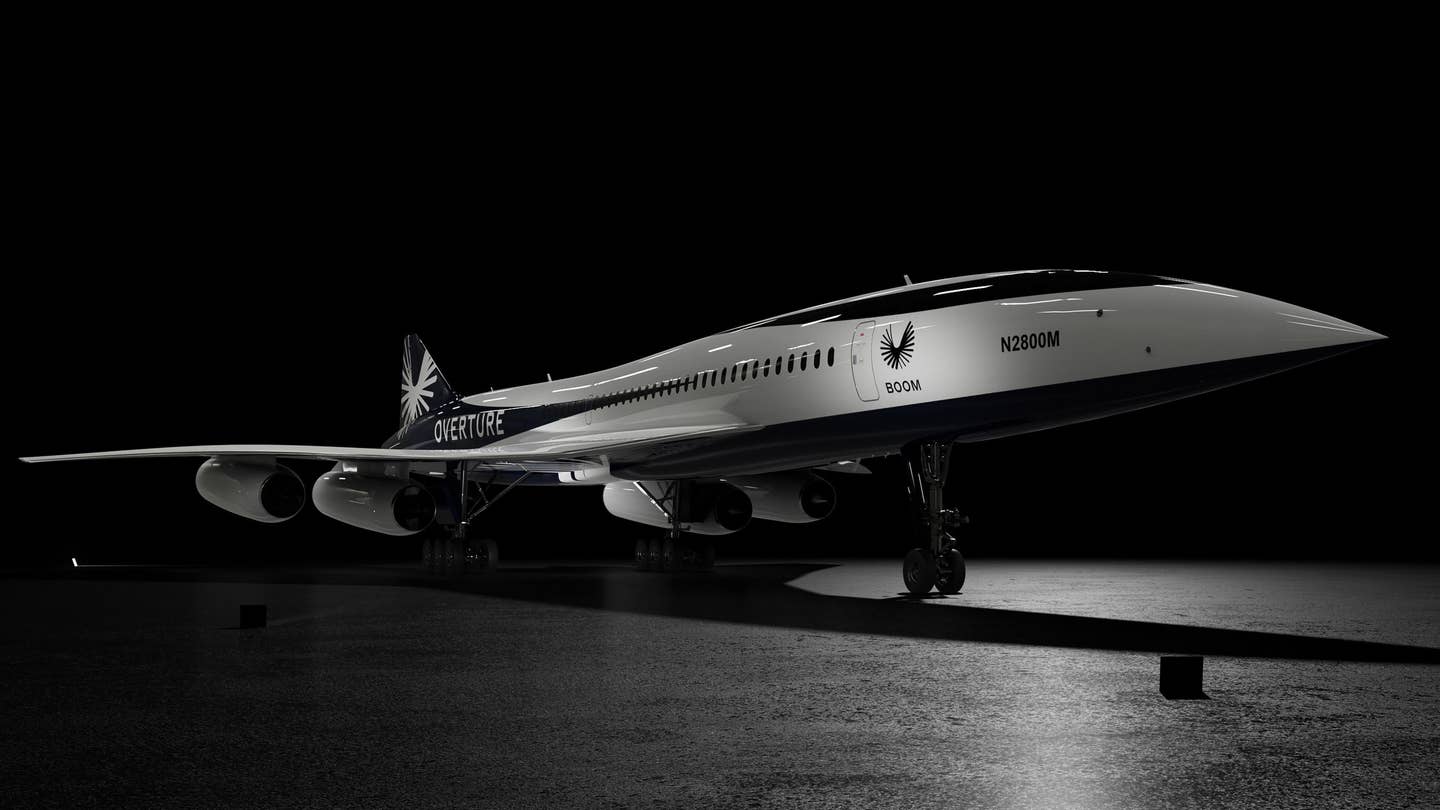Boom Supersonic, a startup firm that wants to make supersonic travel economically feasible, revealed on July 19 that it has partnered with Northrop Grumman to develop a military-oriented variant of its Overture supersonic aircraft design.
The agreement was made official at the Farnborough International Air Show in the United Kingdom. However, the agreement’s specifics are ambiguous, making it difficult to predict what will materialize from the collaboration.
According to Northrop Grumman’s official announcement, the cooperative agreement’s goal is to offer a special mission supersonic aircraft to the US government and its allies.
Feeling the need for speed in collaboration with @boomaero — we're offering special mission supersonic aircraft to the U.S. government and our allies. pic.twitter.com/KTH7nfDkT3
— Northrop Grumman (@northropgrumman) July 19, 2022
The Overture aircraft from Boom Supersonic will serve as the foundation for the special-mission variant, which will later be outfitted with unidentified airborne defense systems manufactured by Northrop Grumman.
The announcement goes on to say that the potential Overture variant might be able to assist with government and armed forces missions that call for “rapid response.”
“Fitted with specialized capabilities, the aircraft could be used to deliver medical supplies, provide for emergency medical evacuation or surveil vast areas faster than conventional aircraft. The special mission Overture variant could also be used to coordinate other aircraft and ground assets in a variety of scenarios,” the announcement noted.
According to Blake Scholl, founder and CEO of Boom Supersonic, time is a strategic advantage in high-stakes situations, such as military operations or disaster response. Boom and Northrop Grumman’s partnership enables Overture’s unrivaled high-speed mission capability to benefit the US and its allies.
Tom Jones, Northrop Grumman’s president of Aeronautics Systems, praised Overture for hopefully bringing about a significant increase in the payload capacity for supersonic aircraft. However, Jones continued by acknowledging that more research is needed to understand the requirements for such a program fully.

The startup is already involved with the US Air Force. Boom has an agreement with AFWERX, a Technology Directorate of the Air Force Research Laboratory (AFRL) and the innovation arm of the Department of Air Force, for the potential VIP transport operation. The company, however, made its first direct link to the defense industry with the latest announcement.
According to Scholl, Northrop has not invested in the startup as part of the agreement, who explained that it is a partnership to explore opportunities.
The startup also said numerous possibilities could alter how armed forces function, including transporting personnel or essential cargo, supplying vital supplies at the right time, and rapid response, surveillance, and reconnaissance.
Boom Supersonic
Boom has generated a lot of buzz in the business world with its promise to offer a supersonic flight for the first time since the Concorde program’s collapse. The startup was established in 2014 and is focused on investigating and creating advanced supersonic flight, primarily for the commercial market.
Boom has also unveiled a new design at the Farnborough International Airshow on July 19 for its Overture flagship aircraft, which it intends to fly for the first time in the first quarter of 2026. CEO Blake Scholl said, “It’s kind of like if Concorde and 747 had a baby.”
Scholl says that the company has undergone 50 design cycles, including wind tunnel tests, since introducing the first outline of Overture. Instead of the two intended engines, the new aircraft design now has four.
It also has a gull wing with a higher aspect ratio, a wider wingspan, and a contoured fuselage that gets narrower toward the back. The goal of all the modifications is to increase aerodynamic effectiveness.
The company promises to transport 65 to 80 passengers per aircraft in four and a half hours, less than half the time currently operating commercial flights, from Seattle to Tokyo. The 200-foot-long, 100-foot-wide Overture design is anticipated to travel at Mach 1.7 over water and Mach 0.94 over land.
Overture’s commercial version is expected to go into production in 2024, begin flight tests in 2026, and start carrying passengers in 2029. The special-mission Overture’s production schedule has not yet been made public.
Challenges Ahead
It is important to remember that this aerospace development domain is highly capital-intensive, risky, and fraught with technological challenges.
Overture isn’t cheap, costing $200 million per unit, but the company claimed it could offer military air fleets something genuinely unique. Scholl also disputed that the Northrop contract represents a betrayal of earlier commitments not to turn the technology into a weapon.
In 2027, Lockheed Martin teamed up with Aerion, Boom’s lone rival at the time, to develop the AS2 supersonic business jet. Later, Lockheed Martin decided not to continue their business relationship with Aerion, and Boeing took over that role.
The AS2 was not intended to be militarized. However, the military might have taken advantage of that aircraft’s Mach 1.4 speeds and streamlined airframe for various purposes, including surveillance and electronic warfare capabilities.
Sadly, Aerion’s assets were liquidated in 2021 after the company struggled to secure the necessary funding to move forward with the AS2 program.
Nonetheless, suppose the boom can continue the program over the long term by surpassing all the financial and technological barriers. In that case, it will mark a significant dramatic shift in military operations.
- Contact the author at ashishmichel@gmail.com
- Follow EurAsian Times on Google News